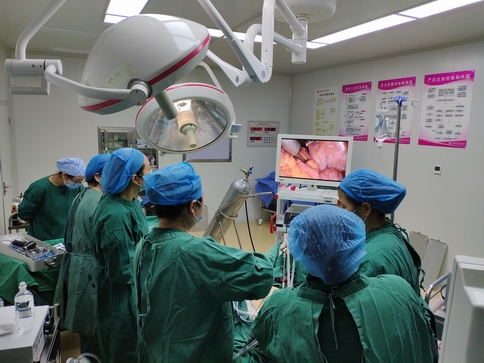Advancements in Laparoscopic Camera Technology
Laparoscopic surgery has revolutionized the way that many surgical procedures are performed. It is a minimally invasive surgical technique that uses small incisions and specialized instruments to perform procedures, often resulting in faster recovery times and reduced postoperative pain. One of the critical components of laparoscopic surgery is the laparoscopic camera, which provides high-quality imaging to guide the surgeon during the procedure.

Over the years, significant advancements have been made in laparoscopic camera technology, resulting in improved imaging quality, increased flexibility, and greater ease of use. Early laparoscopic cameras had a limited field of view, and the images they produced were often grainy and of low quality. However, with the development of high-definition (HD) and three-dimensional (3D) imaging, laparoscopic cameras can now produce images that are clearer and more detailed than ever before.
HD laparoscopic cameras use high-resolution sensors to capture images with a higher level of detail than standard-definition cameras. This can be particularly useful in procedures that require the surgeon to visualize small or intricate structures, such as blood vessels or nerves. 3D laparoscopic cameras provide an even greater level of depth perception, allowing surgeons to more accurately assess spatial relationships between anatomical structures.
Another significant development in laparoscopic camera technology is the introduction of flexible endoscopes. These cameras can bend and flex, allowing them to access hard-to-reach areas of the body. They are particularly useful in procedures that require the surgeon to navigate through tight spaces or around obstacles. The use of flexible endoscopes has greatly expanded the range of procedures that can be performed laparoscopically.
In addition to these advancements, laparoscopic cameras are now often integrated with other technologies, such as robotic surgery systems or energy devices. This integration allows for greater precision and control during the procedure, resulting in improved outcomes for the patient.
Overall, the advancements in laparoscopic camera technology have significantly improved the safety and efficacy of laparoscopic surgery. Surgeons are now able to perform a broader range of procedures with greater accuracy and control. As technology continues to evolve, it is likely that even more significant advancements will be made in laparoscopic camera technology, further improving the quality and safety of laparoscopic surgery.



Leave a message